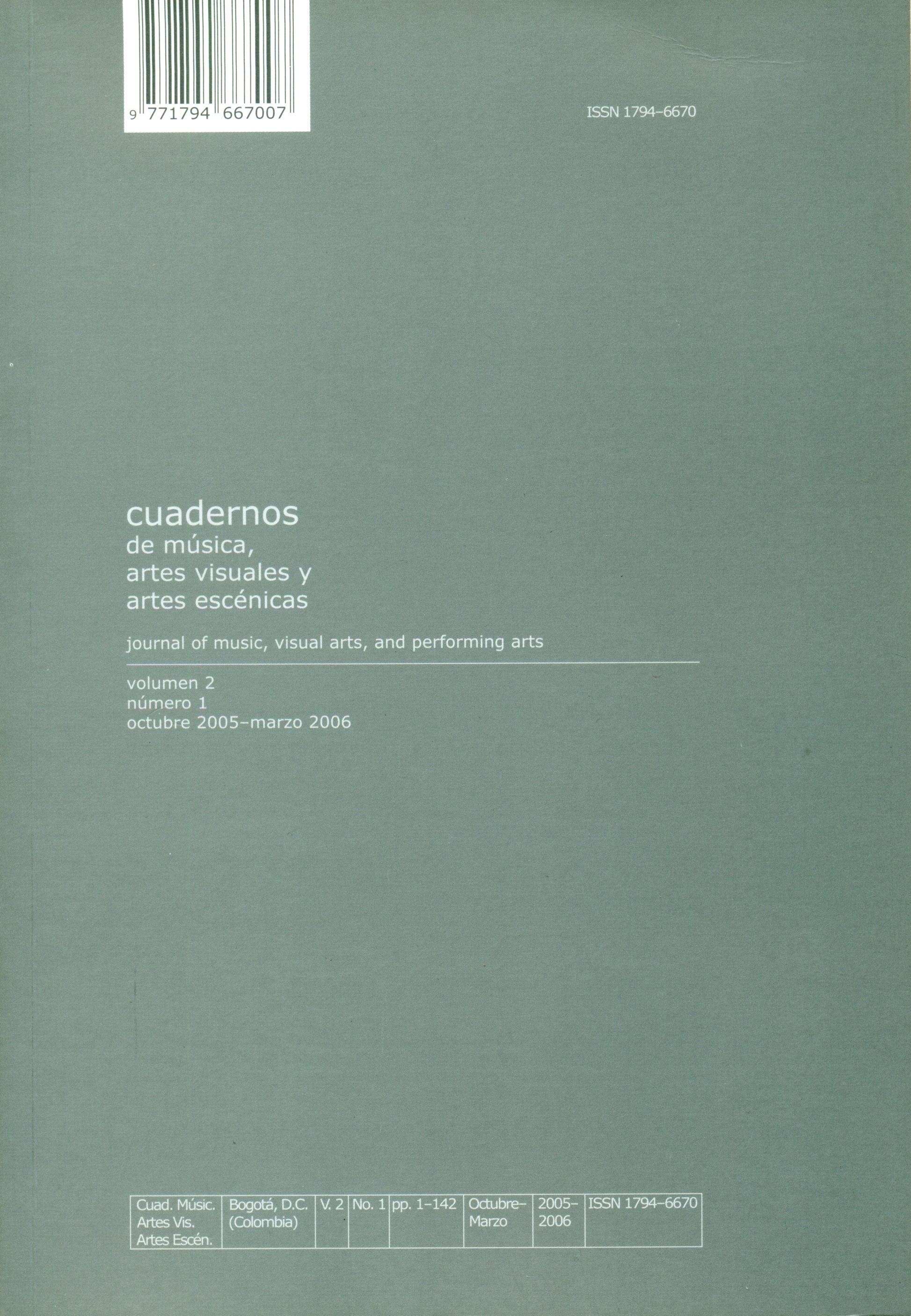Abstract
Este artículo explora el imaginario étnico y social presente en un subgénero del género vocal religioso del villancico, muy popular en España y sus colonias entre los siglos diecisiete y dieciocho. Los villancicos negros o guineos retraban a los esclavos africanos a través de ciertos clichés estilísticos presentes en el texto y, en menor medida, en la música. El presente estudio busca establecer las conexiones entre el villancico negro y el personaje estereotípico del negro en el teatro español del Siglo de Oro. El esclarecimiento de esta relación tiene dos objetivos principales: primero, ubicar el estereotipo negro dentro una lectura más amplia de las tensiones étnicas presentes en la península Ibérica en el siglo dieciseis; y segundo, ver como este mismo imaginario de raza se difundió posteriormente hacia las colonias. De esta manera se quiere argumentar que los villancicos negros latinoamericanos siguieron estereotipos estilísticos peninsulares, sin que nunca mediara una relación directa con las fuentes orales propias de las poblaciones negras esclavizadas. Esto pondría en entredicho las relaciones musicales entre los villancicos negros y las músicas tradicionales de raíz africana que se han pretendido plantear. De cualquier manera, y aunque se trate de una representación sesgada de la cultura de una población dominada, el villancico negro da claves importantes sobre las dinámicas de raza y mestizaje en la creación de una subjetividad colonial latinoamericana.Esta revista científica se encuentra registrada bajo la licencia Creative Commons Reconocimiento 4.0 Internacional. Por lo tanto, esta obra se puede reproducir, distribuir y comunicar públicamente en formato digital, siempre que se reconozca el nombre de los autores y a la Pontificia Universidad Javeriana. Se permite citar, adaptar, transformar, autoarchivar, republicar y crear a partir del material, para cualquier finalidad, siempre que se reconozca adecuadamente la autoría, se proporcione un enlace a la obra original y se indique si se han realizado cambios. La Pontificia Universidad Javeriana no retiene los derechos sobre las obras publicadas y los contenidos son responsabilidad exclusiva de los autores, quienes conservan sus derechos morales, intelectuales, de privacidad y publicidad.
El aval sobre la intervención de la obra (revisión, corrección de estilo, traducción, diagramación) y su posterior divulgación se otorga mediante una licencia de uso y no a través de una cesión de derechos, lo que representa que la revista y la Pontificia Universidad Javeriana se eximen de cualquier responsabilidad que se pueda derivar de una mala práctica ética por parte de los autores. Como consecuencia de la protección brindada por la licencia de uso, la revista puede publicar retractaciones o corregir la información ya publicada. La publicación de contenidos en esta revista no representa regalías para los contribuyentes.


